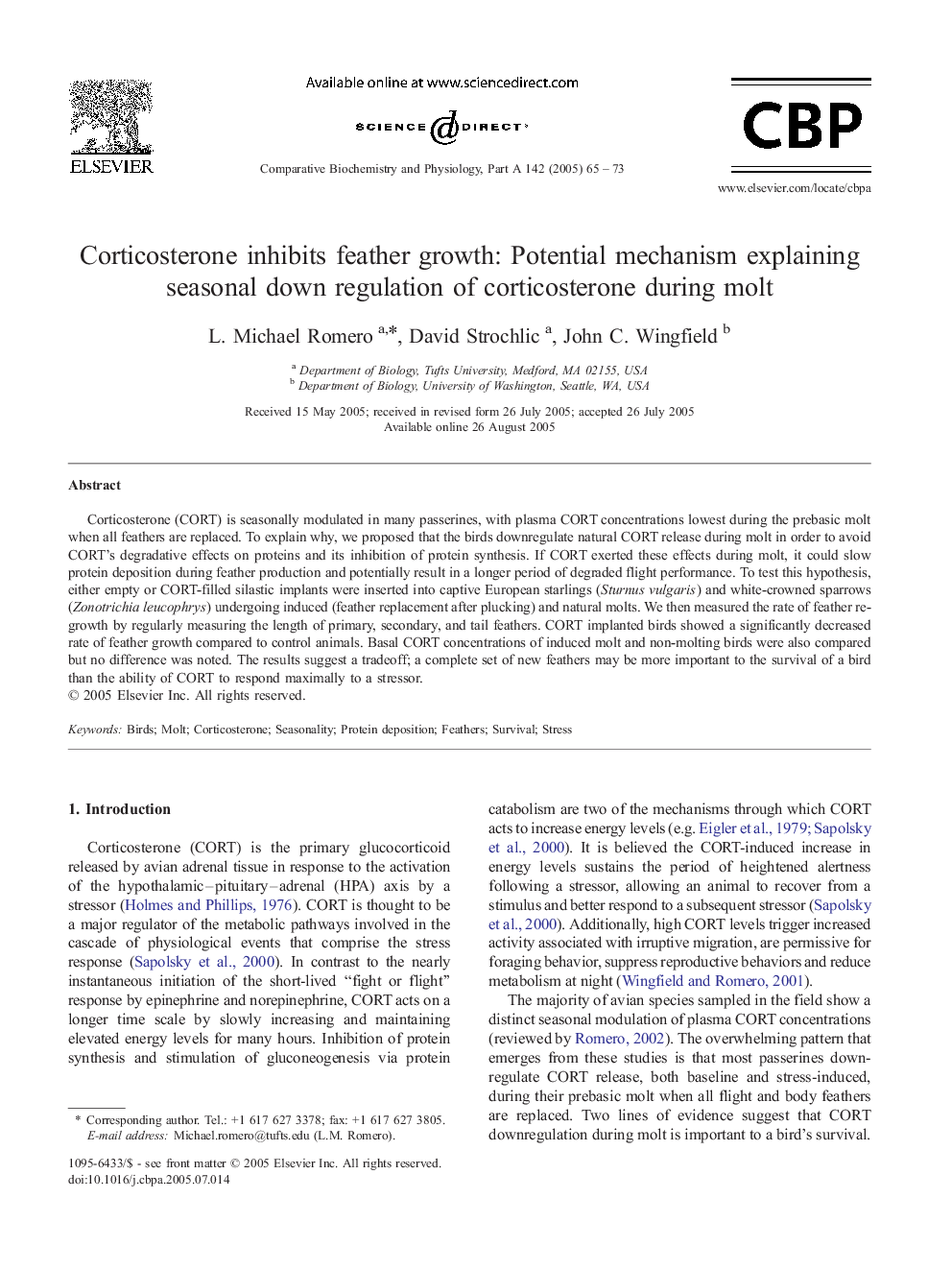| Article ID | Journal | Published Year | Pages | File Type |
|---|---|---|---|---|
| 10819067 | Comparative Biochemistry and Physiology Part A: Molecular & Integrative Physiology | 2005 | 9 Pages |
Abstract
Corticosterone (CORT) is seasonally modulated in many passerines, with plasma CORT concentrations lowest during the prebasic molt when all feathers are replaced. To explain why, we proposed that the birds downregulate natural CORT release during molt in order to avoid CORT's degradative effects on proteins and its inhibition of protein synthesis. If CORT exerted these effects during molt, it could slow protein deposition during feather production and potentially result in a longer period of degraded flight performance. To test this hypothesis, either empty or CORT-filled silastic implants were inserted into captive European starlings (Sturnus vulgaris) and white-crowned sparrows (Zonotrichia leucophrys) undergoing induced (feather replacement after plucking) and natural molts. We then measured the rate of feather re-growth by regularly measuring the length of primary, secondary, and tail feathers. CORT implanted birds showed a significantly decreased rate of feather growth compared to control animals. Basal CORT concentrations of induced molt and non-molting birds were also compared but no difference was noted. The results suggest a tradeoff; a complete set of new feathers may be more important to the survival of a bird than the ability of CORT to respond maximally to a stressor.
Related Topics
Life Sciences
Biochemistry, Genetics and Molecular Biology
Biochemistry
Authors
L. Michael Romero, David Strochlic, John C. Wingfield,
